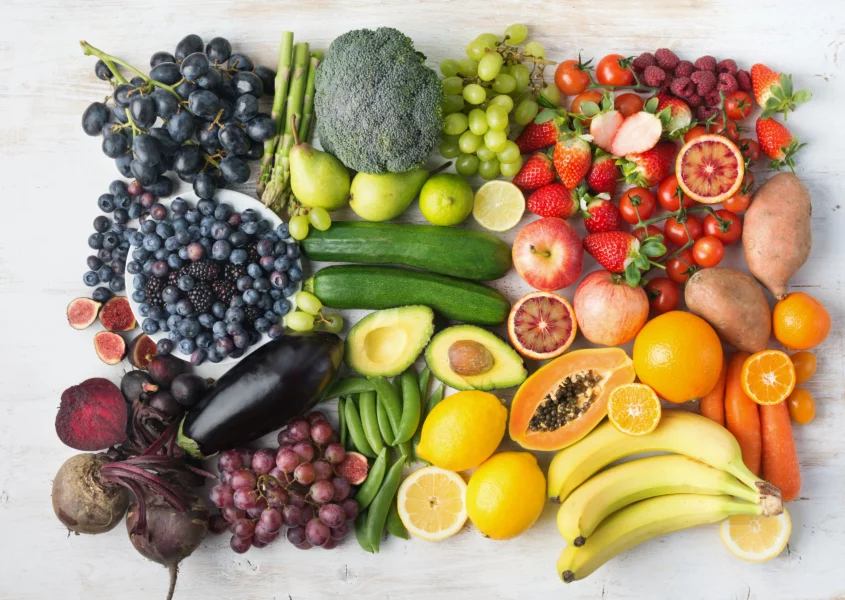
Our bodies are complex, intricate systems that require a delicate balance of nutrients to function at their best. While we often focus on the essentials like proteins, carbohydrates, and vitamins, there’s a whole world of plant-based compounds that play a crucial role in our overall well-being. These remarkable substances, known as phytonutrients, are the unsung heroes of a healthy diet, offering a wealth of benefits that extend far beyond the basic building blocks of nutrition.
UNDERSTANDING PHYTONUTRIENTS: THE PLANT-BASED POWERHOUSES
Phytonutrients are the natural chemicals produced by plants, serving as their first line of defense against various threats in their environment. These compounds, also referred to as phytochemicals, are responsible for the vibrant colors, distinctive aromas, and unique flavors found in fruits, vegetables, herbs, and spices. But their importance extends far beyond their aesthetic appeal – phytonutrients are now recognized as key players in human health, offering a wide range of protective and therapeutic effects.
THE DIVERSE ROLES OF PHYTONUTRIENTS
Phytonutrients are not considered essential nutrients like proteins, carbohydrates, and vitamins, but their impact on our health is undeniable. These plant-based compounds have been shown to exhibit powerful antioxidant properties, helping to neutralize the damaging effects of free radicals and oxidative stress. They also possess anti-inflammatory capabilities, reducing chronic inflammation, which is a contributing factor to numerous chronic diseases. Additionally, phytonutrients have been found to modulate immune function, enhance detoxification processes, and even exhibit neuroprotective effects, potentially offering benefits for conditions like Alzheimer’s and Parkinson’s disease.
THE VIBRANT RAINBOW OF PHYTONUTRIENTS
One of the easiest ways to identify phytonutrient-rich foods is by their vibrant colors. The different hues of fruits and vegetables often correspond to the presence of specific phytonutrient families, each offering unique benefits.
RED: THE LYCOPENE LUMINARIES
Foods in the red spectrum, such as tomatoes, watermelon, and red bell peppers, are rich in the carotenoid compound lycopene. Lycopene is a powerful antioxidant that has been linked to a reduced risk of cancer and improved cardiovascular health.
ORANGE AND YELLOW: CAROTENOID CHAMPIONS
The vibrant orange and yellow hues of fruits and vegetables like carrots, sweet potatoes, and citrus fruits are attributed to the presence of carotenoids like beta-cryptoxanthin and beta-carotene. These compounds have been shown to support intracellular communication and may help prevent heart disease.
GREEN: THE DETOXIFICATION DYNAMOS
The verdant greens of leafy vegetables, broccoli, and kiwi fruit are indicative of the presence of phytonutrients like sulforaphane, isothiocyanates, and indoles. These compounds have been found to possess potent cancer-blocking properties, as they can inhibit the action of carcinogens and facilitate the body’s natural detoxification processes.
BLUE AND PURPLE: THE ANTIOXIDANT ALLIES
The deep, rich hues of blueberries, plums, blackberries, eggplant, and Concord grapes are a result of their high concentrations of anthocyanins – powerful antioxidants believed to delay cellular aging, prevent neurological conditions and promote cardiovascular health by inhibiting blood clot formation.
WHITE AND BROWN: THE ALLIUM ALCHEMISTS
While not as vibrant in color, the onion family and other white or brown plant foods, such as garlic, mushrooms, and cauliflower, contain phytonutrients like allicin and flavonoids like quercetin and kaempferol. These compounds have demonstrated anti-tumor properties and possess potent antioxidant capabilities.
MAXIMIZING PHYTONUTRIENT INTAKE: A COLORFUL APPROACH
To ensure you’re reaping the full benefits of phytonutrients, it’s essential to incorporate a wide variety of colorful fruits and vegetables into your daily diet. Aim for a minimum of 4.5 cups of these nutrient-dense plant foods each day, with a focus on including different hues at every meal.
BUILDING A PHYTONUTRIENT-RICH PLATE
Start by thinking in terms of “servings” – one serving is typically 1/2 cup of chopped raw or cooked vegetables, 1 cup of leafy greens, or 1/2 cup of fresh or frozen fruit. Try to include at least two servings of different-colored produce at each meal, ensuring you’re covering the full spectrum of phytonutrient-rich foods throughout the day.
SNACKS AND SIDES: OPPORTUNITIES FOR PHYTONUTRIENT BOOSTS
Don’t forget about snacks and side dishes as opportunities to add more phytonutrients to your diet. Reach for fresh fruit, raw vegetable sticks, or a handful of nuts and seeds as satisfying between-meal options. When dining out, opt for salads, soups, or vegetable-forward side dishes to complement your main course.
EMBRACING SEASONAL AND LOCAL PRODUCE
Visiting your local farmers’ market or community-supported agriculture (CSA) program can be a great way to discover new, seasonal produce and explore the diverse world of phytonutrients. As an added bonus, fruits and vegetables that are picked at peak ripeness are also more vibrant in flavor. Engage with the farmers and ask for recommendations on how to prepare unfamiliar fruits and vegetables – you might just find a new favorite!
THE CONVENIENCE OF FROZEN PRODUCE
While fresh, in-season produce is ideal, frozen fruits and vegetables can also be excellent sources of phytonutrients. Frozen options are typically picked at the peak of ripeness and quickly frozen, preserving their nutrient content. Keep your freezer stocked with a variety of colorful frozen produce to ensure you always have easy access to phytonutrient-rich ingredients.
ADDRESSING SPECIFIC HEALTH CONCERNS WITH PHYTONUTRIENTS
While phytonutrients offer a wide range of general health benefits, research has also highlighted their potential to address specific medical conditions and concerns.
COMBATING CHRONIC INFLAMMATION
Chronic, low-grade inflammation is a silent contributor to numerous health problems, including cardiovascular disease, cancer, and type 2 diabetes. Many phytonutrients, such as those found in ginger, turmeric, and green tea, have demonstrated potent anti-inflammatory properties, making them valuable allies in the fight against chronic inflammation.
SUPPORTING BRAIN HEALTH AND COGNITIVE FUNCTION
Emerging research suggests that certain phytonutrients, including epigallocatechin-3-gallate (EGCG) from green tea, curcumin from turmeric, and resveratrol from grapes, may offer neuroprotective effects and potentially help slow the progression of neurodegenerative diseases like Alzheimer’s and Parkinson’s.
REDUCING THE RISK OF CANCER
Several phytonutrients have been studied for their potential to prevent and even treat various types of cancer. Compounds like sulforaphane from cruciferous vegetables, lycopene from tomatoes, and flavonoids from berries have demonstrated the ability to inhibit tumor growth, facilitate DNA repair, and support the body’s natural cancer-fighting mechanisms.
PROMOTING CARDIOVASCULAR HEALTH
The antioxidant and anti-inflammatory properties of phytonutrients make them valuable allies in maintaining a healthy cardiovascular system. Compounds like flavonoids, omega-3 fatty acids, and allicin from the onion family have been linked to reduced risk of heart disease, improved blood pressure, and better cholesterol management.
ENHANCING IMMUNE FUNCTION
Certain phytonutrients, such as those found in garlic, ginger, and green tea, have been shown to modulate immune system function, helping to maintain the delicate balance between an overactive and an underactive immune response. This can be particularly beneficial in supporting the body’s defenses against infections and potentially reducing the risk of autoimmune disorders.




